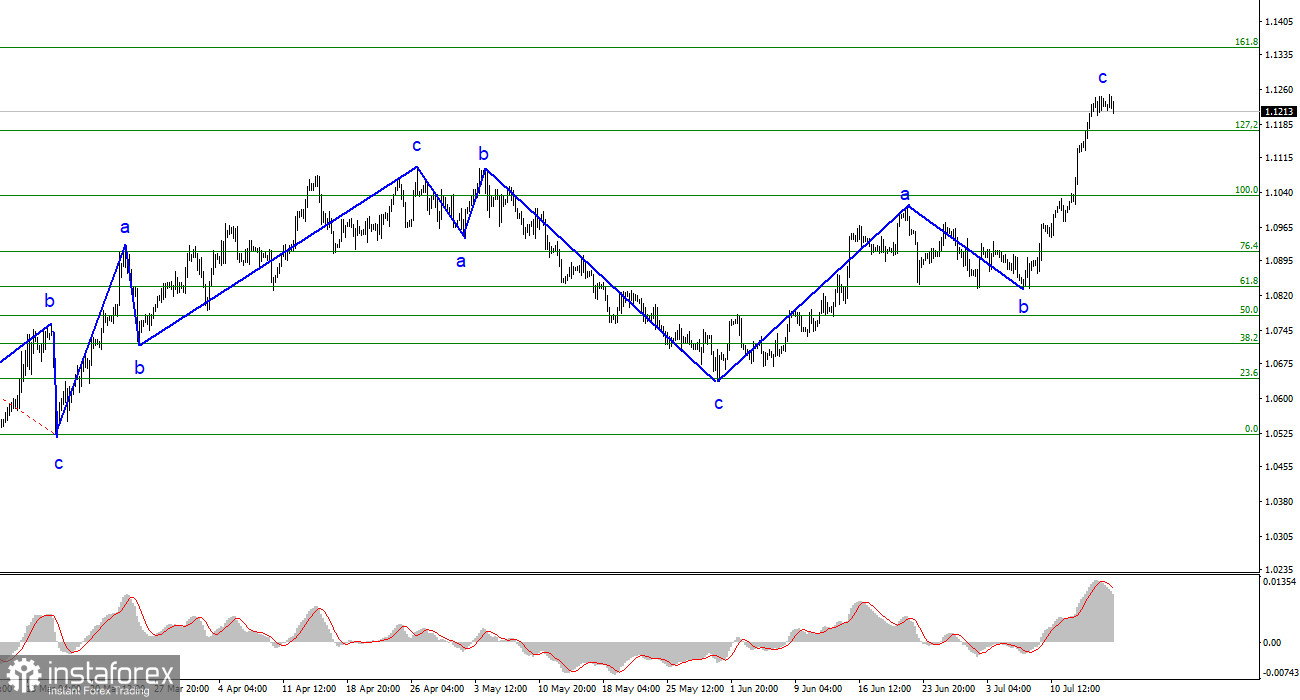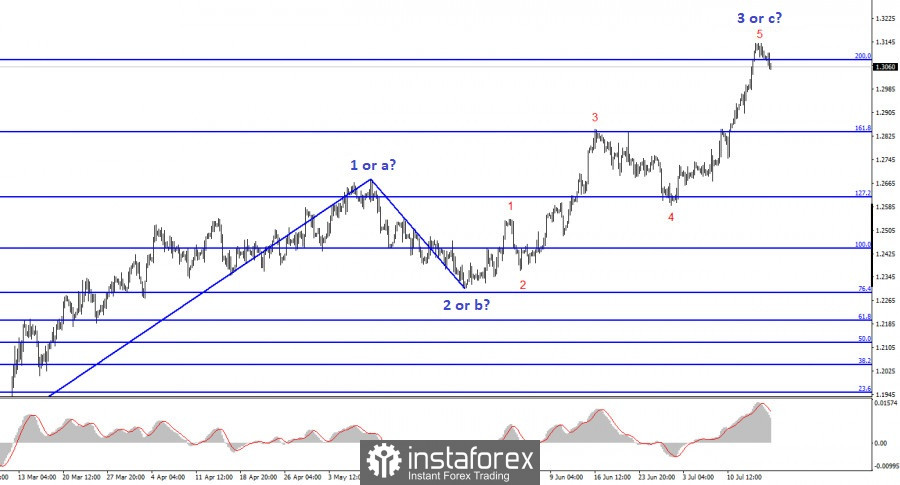We are rapidly approaching the upcoming meetings of central banks in the European Union, the United States, and the United Kingdom. The first two (European Central Bank and Federal Reserve) will take place next week, while the Bank of England will hold its meeting a week later. It's time to understand what decisions they could make.

The Fed has received plenty of food for thought with the latest inflation report. Strictly speaking, the US central bank currently has the most potential options for changes in monetary policy. It has had these options throughout the past year. The fact is that inflation in the US has been declining for nearly 12 months, while the labor market shows virtually no signs of slowing down or cooling off. The economy is growing steadily, not at minimal rates. Therefore, the FOMC has the opportunity to both continue raising rates and refrain from further tightening. If we look at US inflation, it becomes clear that there is no need for the Fed to rush. The indicator fell to 3% in June, and core inflation is declining at a slower pace, which is why the central bank can continue with its aggressive policies.
Fed Chair Jerome Powell stated a few weeks ago that the US central bank is considering two more rate hikes, and this is a likely scenario. At least we don't need to worry about the July meeting, as the rate will increase by another 25 basis points.
The situation with the ECB is also quite straightforward. Inflation remains high while the interest rate remains low. Practically all ECB officials have mentioned that the rate will increase by another 25 basis points in July. Various options are possible in autumn as the dynamics of inflation need to be assessed by that time. Therefore, the ECB is almost certain to raise the rate by 25 basis points.
In the Bank of England's case, the situation, as usual, is more complex. Few expected the central bank to raise rates by 50 basis points at the last meeting. It is quite illogical to expect a pause at this point. Therefore, the BoE will definitely raise the rate; the only question is by how much. Considering their previous decision, I wouldn't completely rule out another 50-basis-point hike. If they make such a decision, the pound may rally again. The market has already priced in a quarter point rate hike, but it is also important to consider what BoE Governor Andrew Bailey communicates after the meeting.
The base scenario is a 25-basis-point rate hike by all three central banks. The alternative scenario is a 50-basis-point hike by the BoE. The crucial factor will be how the market interprets all the central banks' decisions and the rhetoric of their presidents after the meetings. The pound and the euro are currently on the move, and they don't need much to continue rising.

Based on the analysis conducted, I conclude that the uptrend build-up is still in progress, but it can end at any moment. I believe that targets around 1.0500-1.0600 are quite realistic, and I advise selling the instrument with these targets. However, we need to wait for the end of the a-b-c structure, and afterwards we can expect the pair to fall in the indicated area. It is quite risky to buy at the moment. The euro takes advantage of any opportunity to rise, but the news background for the dollar is not as weak as it may seem.
The wave pattern of the GBP/USD pair suggests the formation of an upward set of waves. However, the wave structure has already taken on a five-wave appearance, which means it may be completed. Since the attempt to break through the 1.3084 mark (downwards) was successful, we can expect the pair to edge down. According to the wave analysis, three downward waves should be constructed. This means that the pair should fall to the 1.2840 mark. Be careful with short positions.
 English
English 
 Русский
Русский Bahasa Indonesia
Bahasa Indonesia Bahasa Malay
Bahasa Malay ไทย
ไทย Español
Español Deutsch
Deutsch Български
Български Français
Français Tiếng Việt
Tiếng Việt 中文
中文 বাংলা
বাংলা हिन्दी
हिन्दी Čeština
Čeština Українська
Українська Română
Română

